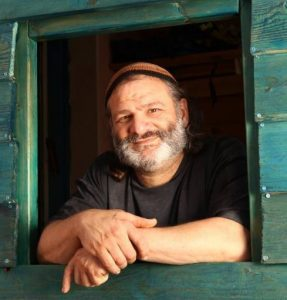REHOVOT – In a medical first for Israel, surgeons at Kaplan Medical Center implanted a donor-free artificial cornea last Thursday, restoring sight to a patient who had suffered through three failed transplants. The EndoArt device, invented by Israeli cornea surgeon Dr. Ofer Daphna and developed by EyeYon Medical, marks a turning point for the more than 13 million people worldwide waiting for corneal transplants that may never come.
The patient had exhausted every conventional option. Severe corneal edema—swelling caused by a damaged endothelium that could no longer pump fluid out of the cornea—had left him with failing vision and mounting pain. Each previous transplant had been rejected. Another attempt with donor tissue carried risks too high to justify. The ultra-thin synthetic implant became his last chance to see again.
“This is a genuine breakthrough offering hope to patients awaiting corneal transplants, especially those who have exhausted all other options,” said Professor Arie Marcovich, Head of the Ophthalmology Department at Kaplan Medical Center. “The new implant developed by EyeYon Medical offers him and many others the opportunity to see again without the need for a human donor cornea. This is particularly important in Israel, where waiting lists for corneal transplants can extend for months or even years.”
The procedure itself takes 30 to 40 minutes under sedation. The device attaches to the back of the corneal surface, creating a physical barrier that stops fluid from entering the cornea’s main body and causing the swelling that destroys transparency. Unlike donor tissue, the biocompatible acrylic material carries no risk of rejection or disease transmission. The implant is CE-approved and has been successfully implanted in hundreds of patients across Europe.
For Nahum Ferera, CEO of EyeYon Medical, the surgery held personal meaning. “The technology that was born at Kaplan Hospital by Dr. Daphna has now returned there after hundreds of successful surgeries worldwide, as a safe and effective product,” he said. “This is an emotional moment for our team to see Israeli technology truly transforming lives.”
Israel has become a global leader in medical innovation, producing breakthroughs that save lives far beyond its borders. From cancer treatments to surgical techniques, Israeli ingenuity addresses critical health challenges with solutions that combine scientific excellence and practical application. The EndoArt implant is the latest example of how a small nation continues to reshape modern medicine.
The restoration of sight to the blind is a humanitarian triumph, but it is also a sign explicitly connected to the messianic age. When describing the era of redemption, the prophet Isaiah declares: “Then the eyes of the blind shall be opened, and the ears of the deaf shall be unstopped” (Isaiah 35:5). The verse offers no metaphor, no allegory. The blind will see. The deaf will hear. Physical ailments that have plagued humanity will be eliminated.
Isaiah reinforces this promise elsewhere: “And in that day shall the deaf hear the words of the book, and the eyes of the blind shall see out of obscurity and out of darkness” (Isaiah 29:18). The messianic age will bring literal, physical healing to those who have been denied their senses. The restoration of sight is not symbolic—it is concrete, medical, and complete.
Yet the Sages grappled with an apparent contradiction. Jeremiah speaks of the ingathering of the exiles and mentions bringing back “the blind and the lame” among the returnees (Jeremiah 31:7). The Talmud in Sanhedrin 91b addresses this tension directly. The resolution: at the beginning of the redemptive process, people will be resurrected or gathered with their existing physical conditions. But at the culmination—at the final stage of the messianic age—all defects will be entirely removed. The blind will see. The lame will walk. The deaf will hear.
The implications extend beyond individual healing. Isaiah 42:7 describes the Messiah’s mission as bringing “the prisoners out of the prison, and them that sit in darkness out of the prison house.” In our time, a total of 168 hostages were returned alive after being held in captivity in Gaza, held in literal darkness by Hamas. The last living hostages were restored to the light and to freedom just three weeks ago. The restoration of sight and the release of captives are intertwined in prophetic literature—both represent liberation from bondage, whether physical or spiritual.
Israel’s role in bringing healing to the nations is not accidental. The medical breakthroughs emerging from this land demonstrate a unique convergence of scientific excellence and biblical destiny. As the world waits for the ultimate redemption, these advances serve as tangible signs that the promises made thousands of years ago remain relevant, urgent, and within reach.




